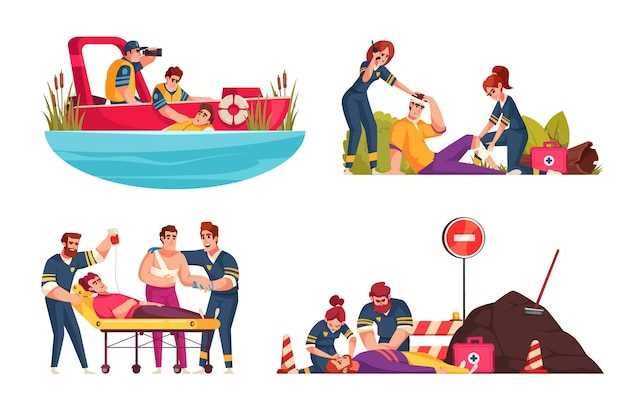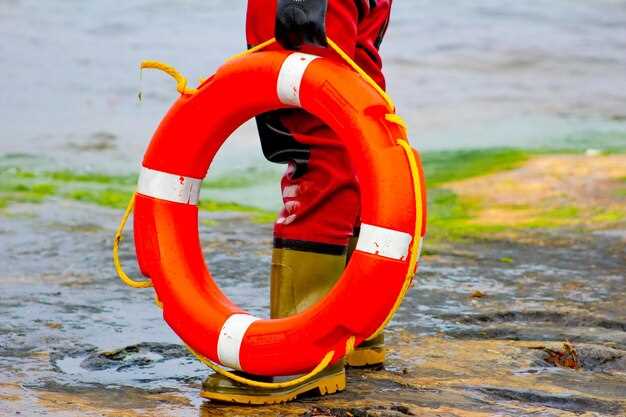
Water emergencies can strike unexpectedly, posing significant risks to life and property. Whether it’s a flood, a burst water main, or a contamination incident, the need for a swift and coordinated response is vital. Addressing these situations effectively requires a comprehensive understanding of safety protocols and emergency procedures that minimize hazards while ensuring rapid recovery.
To navigate the complexities of water emergencies, it is crucial to establish clear communication channels and a well-defined emergency plan. Each incident demands a tailored approach, depending on the nature of the emergency and the resources available. Stakeholders must be prepared to assess the situation quickly, implement evacuation plans if necessary, and coordinate with local authorities and emergency services.
Furthermore, proper training and preparedness are key elements that can make the difference in the outcome of water-related crises. Communities equipped with knowledge about potential threats and response strategies increase their resilience against such events. By fostering an environment of readiness, we not only enhance public safety but also pave the way for efficient recovery efforts in the aftermath of a water emergency.
Assessing the Situation: Key Indicators of a Boat Emergency

When operating a boat, recognizing the signs of an emergency is crucial for ensuring safety. Early detection can mean the difference between a minor incident and a life-threatening situation. Some key indicators to watch for include:
1. Water Ingress: Any signs of water entering the vessel should be addressed immediately. This can include visible leaks, unusual water levels within the boat, or malfunctioning bilge pumps. Quick action is essential to prevent capsizing or sinking.
2. Engine Failure: A sudden loss of power or unusual noises coming from the engine can signal a serious malfunction. If the engine stalls or struggles to start, it may limit maneuverability, especially in emergency situations.
3. Electrical System Issues: Flickering lights, malfunctioning navigation systems, or unexpected alarms indicate problems with the boat’s electrical system. This can hinder communication and navigation, complicating response efforts in emergencies.
4. Severe Weather Changes: Rapid changes in weather conditions, such as sudden storms or high winds, create hazardous boating environments. Monitoring weather forecasts and recognizing signs of impending severe weather is critical for safety.
5. Crew Distress: Observing signs of distress among crew members is essential. This includes panic, signs of hypothermia, or serious injury due to an accident. Crew well-being must be prioritized to ensure effective emergency response.
6. Communication Failure: Inability to communicate effectively, whether through radios or signaling devices, can escalate an emergency. Ensure that all communication equipment is functional before heading out and regularly check throughout the journey.
7. Floating Debris and Obstructions: Encountering unexpected objects in the water can pose threats to navigation and safety. Be vigilant for floating debris or submerged objects that could damage the boat or lead to capsizing.
By being aware of these indicators, boat operators can assess emergencies effectively and take appropriate action to mitigate risks and ensure the safety of all onboard.
Immediate Actions to Take for Preventing Injuries on Water
When a water emergency occurs, it is crucial to act swiftly to ensure safety and minimize the risk of injuries. The following immediate actions should be taken:
Secure Your Boat: Before addressing any emergency, ensure that the boat is stable and secure. Check for any leaks or damage that could exacerbate the situation. A well-maintained vessel reduces the risk of capsizing or taking on water.
Wear Proper Safety Gear: Everyone on board should wear life jackets at all times. This essential gear increases buoyancy and provides critical support if someone falls overboard or encounters difficulties in the water.
Assess the Situation: Quickly evaluate the emergency’s nature. Determine if there are any immediate threats to life or safety, such as submerged obstacles or strong currents.
Communicate Effectively: Utilize a marine radio to contact emergency services or other boats in the vicinity. Keep communication clear and provide specific details about the location and nature of the emergency.
Implement Emergency Procedures: Follow established emergency protocols, such as deploying life rings or flotation devices to assist anyone in distress. If someone is missing in the water, use a search pattern while ensuring the safety of all rescue personnel.
Stay Calm: Encourage everyone on board to remain calm. Panic can lead to rash decisions and increase the likelihood of injuries. Providing clear instructions can help maintain order during the emergency.
Monitor Weather Conditions: Staying informed about local weather conditions is vital. Sudden changes can lead to hazardous situations. If conditions worsen, consider moving to a safer location or heading back to shore, if possible.
By taking these immediate actions during a water emergency, boaters can significantly reduce the risk of injuries and ensure the safety of all individuals involved.
Coordinating Rescue Efforts: Best Practices for Communication

Effective communication is crucial during water emergencies, especially when coordinating rescue efforts. The following best practices ensure that all team members remain informed and responsive throughout the operation.
- Establish a Central Command Center: A dedicated location for decision-making and coordination minimizes confusion. This center should have reliable communication tools to connect all rescue teams.
- Utilize Multiple Communication Channels: Employ a mix of radios, mobile phones, and satellite communication to enhance connectivity. A backup system should be in place in case primary methods fail.
- Designate Communication Roles: Assign specific roles to team members for information relay and response updates. This avoids information overload and ensures swift dissemination of critical details.
- Implement a Standardized Protocol: Use clear and consistent language across all communication to prevent misunderstandings. A set of standard phrases can streamline exchanges and reduce the likelihood of confusion.
- Regular Status Updates: Schedule frequent briefings to share vital information, such as the location of victims, available resources, and the status of boats in the water. Keeping everyone informed allows for more strategic decisions.
- Activate Emergency Alerts: Use emergency alert systems to notify the community and other agencies quickly. This can rally additional support and resources when needed.
Implementing these best practices facilitates efficient collaboration among rescue teams, ultimately enhancing the response to water emergencies.



